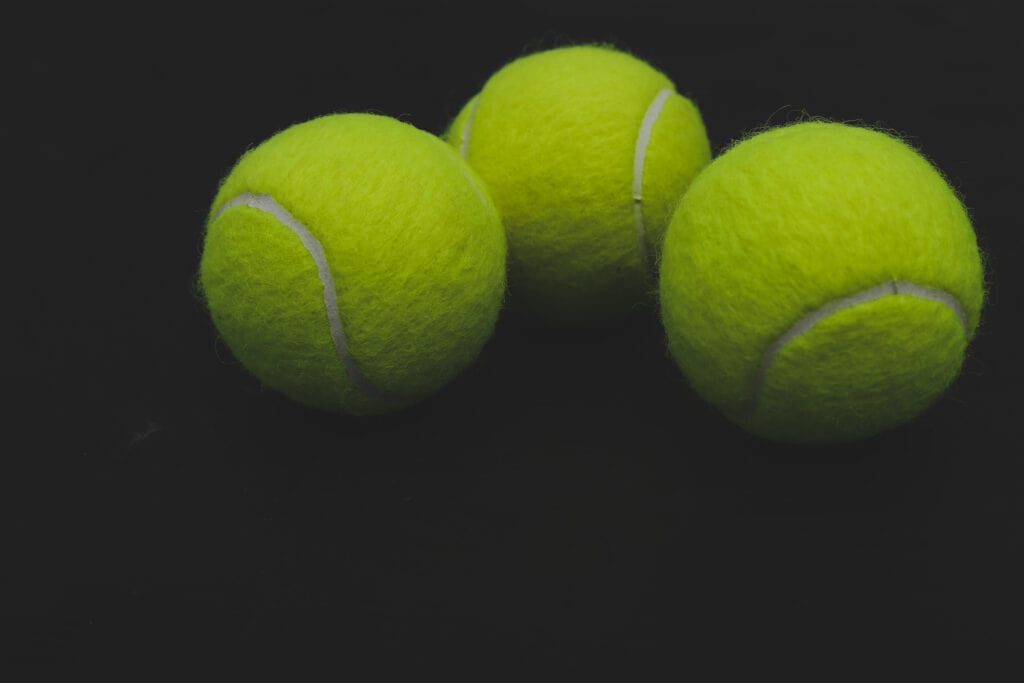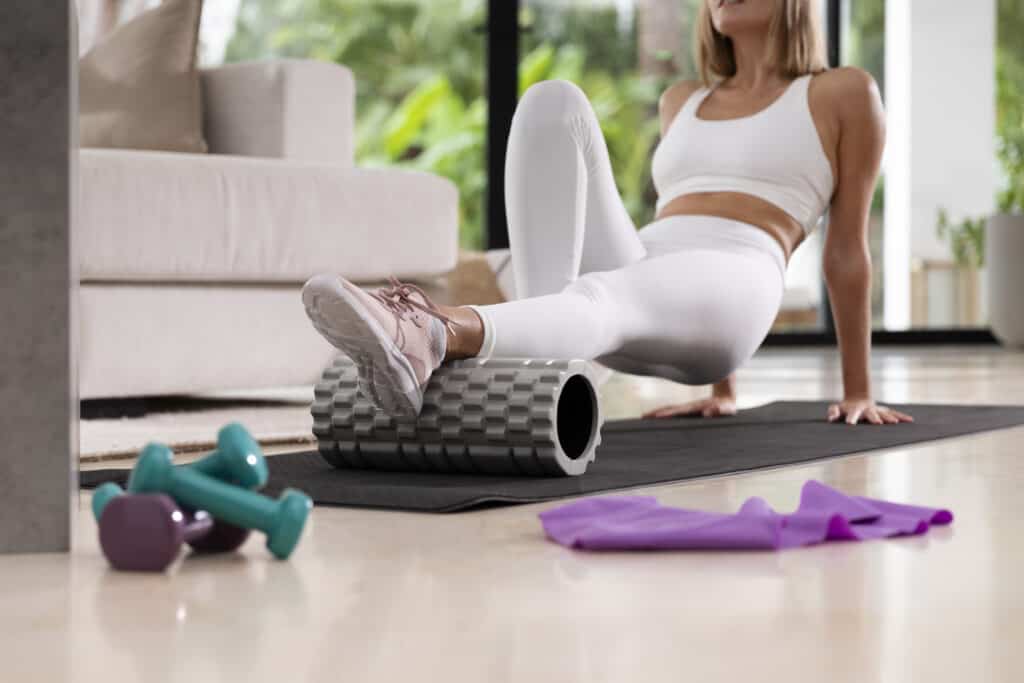There are quite literally hundreds of fitness products that can help your body recover faster from exercise. A few of these recovery products work better than others and are quite affordable. The two recovery products that we’re talking about are a foam roller and a pair of tennis balls. Yes, tennis balls! Not only are they affordable, both can be extremely versatile, in the right hands.
Both can work their magic when it comes to your body. Helping to reduce muscle stiffness, and in turn, bringing back some of that lost range of motion. They can be used either at home, in the gym or while traveling. The foam roller gained popularity back in the 1980’s thanks to a physical therapist who brought it into the mainstream from the world of clinical rehabilitation. As for the tennis balls, they have been around seemingly forever (since the mid-1800’s).
Why use a foam roller and/or tennis balls as part of your recovery process? Because they offer so many benefits. First, they can be used to help prepare the body for exercise, are an effective massage tool, can improve mobility, and lastly, maintain healthy connective tissue, like fascia.
How to Use a Foam Roller as Part of Your Warm-up
Before your next strength workout, try incorporating a few dynamic warm-up movements. Then use a foam roller for about 7-12 minutes, to “roll-out” any tight areas, and take note of how you feel afterwards. More importantly, notice the difference in the way you feel during your workout. We have a tendency to sit for prolonged periods of time throughout the day. As a result, muscles and connective tissue become tight and restricted. Overtime, this can negatively affect your workout, not to mention your posture, and the way you move. Regular bouts of foam rolling can help offset these issues and much more.
Incorporate a Foam Roller into Your Recovery Process
Another benefit of using a foam roller is the potential to help your body recover faster from a workout. Foam rolling can decrease the “perception of pain” that the body may be experiencing from overtraining. It targets the myofascial network in the body, helping to reduce trigger points and release restrictive connective tissue and muscle.
The body has a tendency to experience delayed-onset muscle soreness (DOMS) following an intense workout. A 2015 study in the Journal of Athletic Training suggested that foam rolling after intense exercise is a great way to reduce soreness and help with recovery. The study looked at college-aged males and showed those who foam rolled post exercise, were able to perform better at 24, 48 and 72 hours after exercise induced soreness. And a comprehensive review published in the International Journal of Sports Physical Therapy reported foam rolling promotes short-term increases in range of motion.
Finally, a meta-analysis, published in the Frontiers in Physiology (2019) showed foam rolling had a positive effect on performance and recovery. This particular review of 21 research studies and 451 subjects, also showed better results were exhibited during a warm-up phase rather than as a recovery component of an exercise session.
Foam rolling is not the be-all-end-all when it comes to fitness products but you can definitely benefit from regular use, before and/or after a workout. Give it a try and experience the benefits yourself.

Tennis Balls Can be Used for More than Just Tennis
There are probably already a few tennis balls lying around the house. Grab one and just sit on it. Try first rolling out your tight glutes, eventually transitioning to your side, targeting your glute medius. Magic! Right? Next, place two tennis balls in a sock and make sure both balls are close together. Put a knot at the open end of the sock so the balls can’t escape. This becomes an instant deep tissue massage product, also known as a “peanut.”
Your best option is to lie on the balls and rollout your entire back, from cervical, thoracic and lumbar areas. Let the balls push into or knead your paraspinal muscles (also known as your erector spinae). Rollout at a rate of inch/second, traveling from your cervical down to your lumbar spine area. As you hit a tight area (“trigger point”), stop, breath and relax into it, and hang out there for a few minutes before proceeding. Keep in mind, you may need to commit more time, initially, using these recovery tools in order to restore your tissue back to its original “healthy” state.
Stay Strong Together
Jefit app was named best fitness app for 2023 by the International Association of Strength Coaches. The app comes equipped with an advanced, customizable workout planner and training log. Take advantage of Jefits exercise database for your strength workouts. Visit our members-only Facebook group. Connect with like-minded people, share tips, and advice to help get closer to reaching your fitness goals.
- Whey vs. Casein: What’s the Best Protein for Building Muscle - April 18, 2025
- Four Popular Jefit Chest Exercises Backed by Science - April 16, 2025
- 4 Must-Have Exercises Backed by Science for a Full-Body Workout - April 14, 2025
